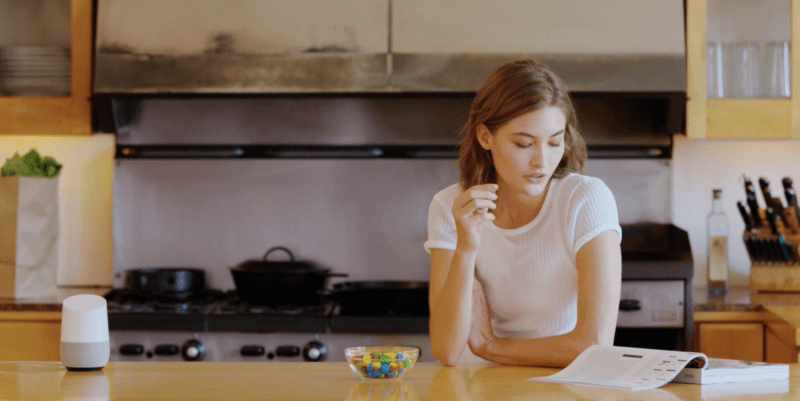Six reasons why the Google Assistant might be a useful tool in your toolkit
Here are two things you should know about me:
Firstly, I have been a qualitative researcher for 25 years and much of this time I’ve spent sitting at people’s kitchen benches, seeking to understand what drives their attitudes and behaviours around brands and products.
Secondly, I am a self confessed technophile and have been using a Google Home since (in fact just before) they officially launched them in Australia. In our household we have five: they are in the kitchen, the master bedroom and each of my three children’s bedrooms. Each day the Google Assistant plays music, answers search and homework questions, does simple maths, finds recipes, casts videos on You Tube, announces when dinner is ready and adds items to our shared shopping list. I have developed a growing curiousity about how it understands and responds.
So it was invetable that I would eventually put these two things together – digital assistants and qualitative research. In 2019 (I know that feels like a lifetime ago) I presented my first paper on this at ESOMAR Asia, Macau: Let them speak! This year, in fact this week, I was due to present a follow up paper on voice research at ESOMAR Asia: New Delhi: Giving Voice to the Voiceless. Now, like every other conference, it is on hold until the Covid-19 crisis has passed.
I am beyond thrilled to be finally making available the ability to conduct qualitative research at scale using voice. Here are six reasons why you might consider creating a voice first market study for your business or clients.
- No hyperlink, no hands. To invoke a study, your audience simply says the magic words to the Google Assistant. Our service is called Hot House, so they would simply say “OK Google, talk to Hot House”. They would then be asked for the code word or study name, and boom, they are in. This removes a lot of barriers to participation:
- no glasses handy? Not a problem!
- dirty hands? Fine!
- busy doing something else – folding the washing, painting your nails, feeding a child, tidying up? A perfect time to answer some questions.
- Voice can be truly In the moment. I have been in some fairly intimate situations with people in the name of uncovering insight, including in the change room with them while they try on clothes, but there are limits to when qual research can really be in the moment versus unpicking this once the true moment has passed. With voice research you can have the conversation take place just after, or even right in the moment. We are currently working with a prospective client to understand how to talk to customers about how their hair feels just after they’ve washed it, right in the bathroom. You could equally do this in other moments of truth:
- Just after they’ve bought something
- While they are using your product
- During or after an event
- With their permission, we can even schedule the start time of the conversation to co-incide with this moment, right from the assistant. Hey Anne-Marie, are you ready to answer a few questions for me about …
- According to Stanford University, we speak 3 times faster than we type on a mobile device. This means that when we want to get deeper and we can’t realistically expect people to be using a keyboard, that a voice-first market research study could be a better way to get more expansive responses (see video below).
- According to Adult Learning Australia, 14% of the adult population have literacy levels so low that they struggle with everyday tasks, and 30% have literacy skills that make it difficult for them to find and keep work. By offering voice first you design for those people without overtly targeting them which makes for more inclusive consultation and better research design.
- We can set up a voice study to work on a range of devices but the main one is the Google Assistant. It is embedded in 1 billion devices world wide and works on Apple devices.
- We can design and launch a voice study in a matter of days, not weeks and you can be in field and seeing results come through as they happen.
If you would like to know more, get in touch.


